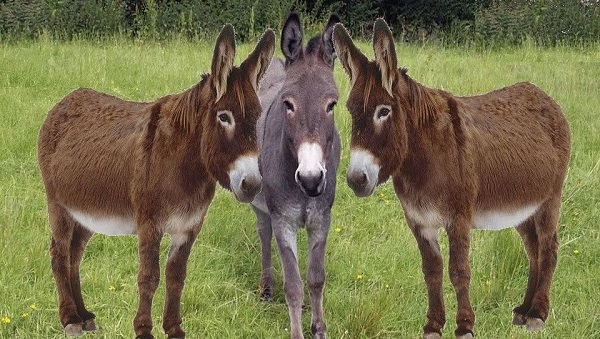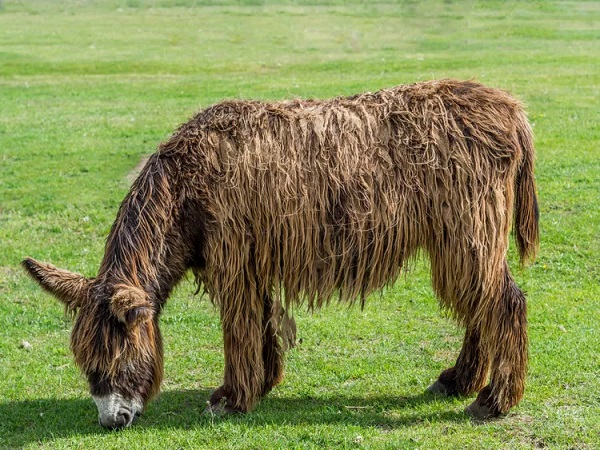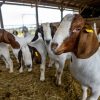
The donkey is one of the most underappreciated animals. With roots in Asia and Africa, it has a long and varied history. As far as the donkey’s characteristics, you’ve heard of its famed obstinacy, but do you know the intelligent reason behind this trait? How about the donkey’s skilful ears or the way the animal can act as a guide for livestock?
Follow us on this interesting article here on Afribeats as we present to you 10 surprising and interesting facts about donkeys.
1. Their Large Ears Help Them Stay Cool
Wild asses such as donkeys evolved in arid locations in Africa and Asia, where most herds tend to be somewhat spread out. Large ears help heighten a donkey’s sense of hearing, so it can pick up the calls of herd mates—and predators—from miles away. Donkeys also use their large ears for heat dissipation; the larger surface area helps the donkey expel its internal heat at a high rate to stay cool in hot desert environments.
2. Donkeys’ Vocalisation Is Unique
The donkey’s characteristic sound is called braying. It is unique among the equids because it requires an ability that donkeys have but horses and zebras lack: vocalising while both inhaling and exhaling. The hee occurs during air intake, and the haw comes during air outflow.
Despite this sound being specific to donkeys, there is still some variation. The duration and frequency of a bray, for instance, are unique to each animal.
3. One Donkey Breed Is Impressively Hairy

The Poitou donkey was developed in the French Poitou region in the 18th century, and it is a standout among breeds created by humans. Used primarily to breed mules across Europe, it is known for its distinctive long coat that hangs in thick, matted cords called cadenettes, similar to dreadlocks. The longer and more matted the coat, the more prized the donkey.
But as the use of donkeys and mules declined in the modern era, so too did the breeding of Poitou donkeys. By 1977, there were only 44 of the animals left. Since then, numbers have been rising, thanks to private breeders and conservation efforts.
4. Their Ancestors Are on the Brink
There are two species of wild ass: the African wild ass and the Asiatic wild ass. However, only the former is the ancestor from which today’s domesticated donkeys can be traced. Unfortunately, despite being the start of domesticated donkeys 5,000 years ago, the African wild ass is in danger.2
According to the IUCN, the African wild ass is critically endangered with between just 23 and 200 adults left in the wild as of 2014.3 It is hunted for food and traditional medicinal purposes, and it suffers from human encroachment; human-tended livestock outcompetes the wild creatures for what little water can be found in their arid habitat.
5. There Are Conservation Efforts To Protect Endangered Wild Asses
The future for the African wild ass may seem bleak, but people are working to protect them. The Convention on the Conservation of Migratory Species of Wild Animals (CMS), an environmental treaty of the United Nations, created a plan in 2017 called the “Roadmap for the Conservation of the African Wild Ass Equus africanus.”4 This plan’s thorough strategy hones in on each geographic area that holds a significant African wild ass population and outlines tailored objectives and actions to be taken over the next 20 years.
Meanwhile, there is also legislation in place to protect these donkey ancestors, including full legal protections in Eritrea and Ethiopia and the establishment of protective nature reserves.
6. Donkeys are Part of Many Hybrids
Donkeys are key to a number of the world’s hybrid creatures; because they are closely related to horses and zebras, donkeys can produce offspring with both. Creating hybrids was standard practice for centuries because mules (a hybrid) were popular working animals. The long history of creating donkey hybrids has led to an abundance of names for the mixed-species animals. Here are just a few:
- Mule: a hybrid of a male donkey and a female horse
- Hinny: a hybrid of a female donkey and a male horse
- John mule: the male offspring of a horse and a donkey
- Molly: the female offspring of a horse and a donkey
Mules are almost always sterile. But despite the slim odds of a foal, folks still came up with names for them:
- Jule, donkule: the offspring of a male donkey and a female mule
- Hule: the offspring of a male horse and a female mule
Because donkeys can mate with zebras, there are creative names for those offspring, too:
- Zebra hinny, zebret, zebrinny: a hybrid of a male donkey and a female zebra
- Zebroid, zebrass, zedonk: a hybrid of a female donkey and a male zebra.
7. They Are Very Social
Donkeys are social animals that do not like to be alone. They evolved as herd animals and form deep, lifelong bonds with other donkeys or animals with whom they share a pasture.
The close bond between two donkeys is called a pair bond, and there is research to prove the legitimacy of this bond.5 Separating a pair has negative effects on both donkeys, including stress, pining behaviour, and loss of appetite.
This is why, for those interested in owning one of these animals, it is commonly advised to bring home two donkeys or at least place your donkey with potential friends, such as a horse.
8. They Can Act as Guard Animals
Donkeys are naturally aggressive toward canid animals. As a result, they are sometimes used as “guardians” for livestock—they can defend against a dog, coyote, fox, or even bobcat that is bothering a herd of sheep or goats. Livestock with such a “guardian” will begin to see the donkey as a protector and gravitate toward it when sensing danger.
9. Donkeys Are Stubborn
Donkeys are known for being obstinate, planting their feet, and staying put regardless of how hard a handler pulls. But just because donkeys tend to resist, it doesn’t mean the animals are dumb, as commonly assumed. Quite the opposite.
Donkeys have a keen sense of self-preservation. If they feel they are in danger, rather than running away, they will stand their ground and refuse to move, giving them time to make their own decision about whether or not it is safe to keep going forward. This reaction is distinctly different from that of horses that, when frightened, usually flee immediately.
10. Some Donkeys Are Tiny
Miniature donkeys are impressively small. Native to Sicily and Sardinia, they stand no taller than three feet high at the shoulder. The Guinness World Record for the shortest donkey currently belongs to KneeHi at 25.29 inches tall, but another miniature donkey, Ottie, stood at 19 inches high when fully grown in 2017 and never officially received the title.
It is important to note that, unlike many other miniature animal breeds, the miniature donkey is not a bred-down version of the “normal” animal—its size is natural.



